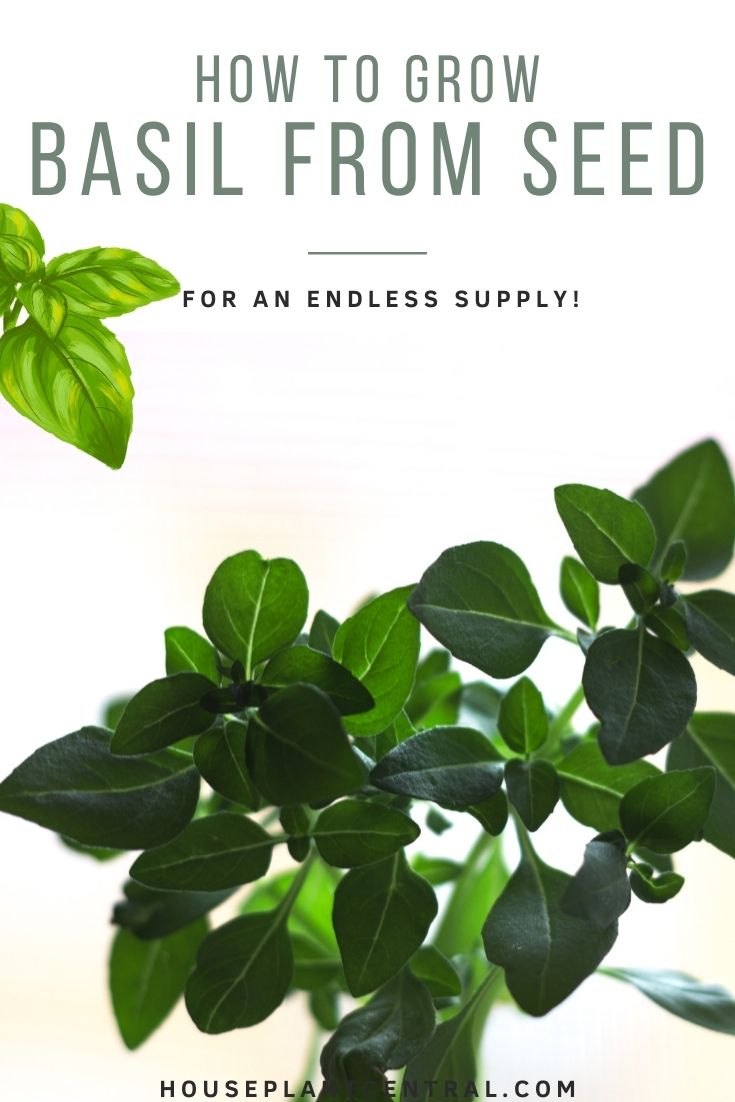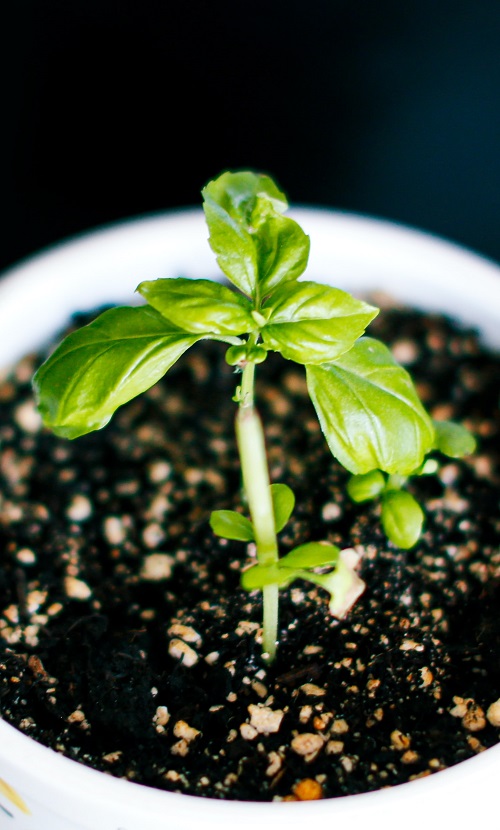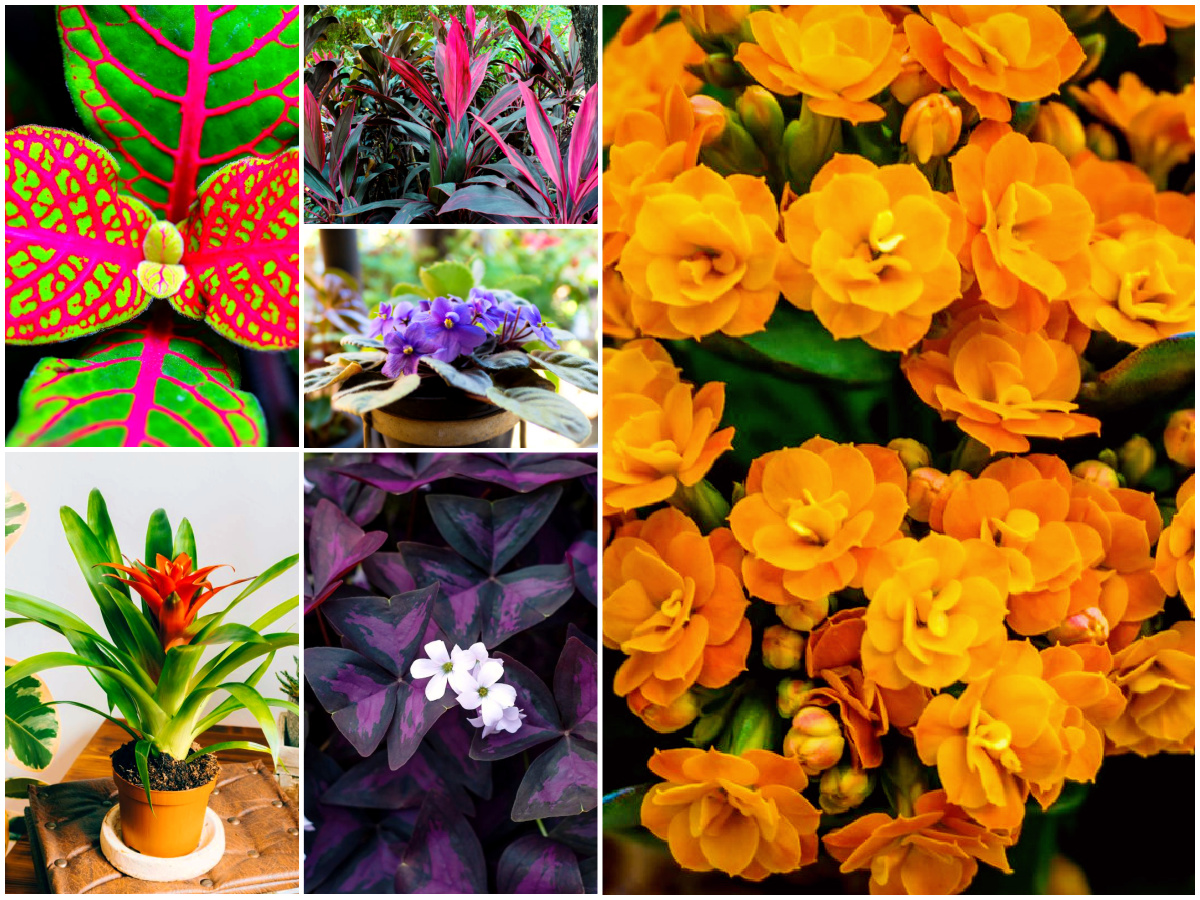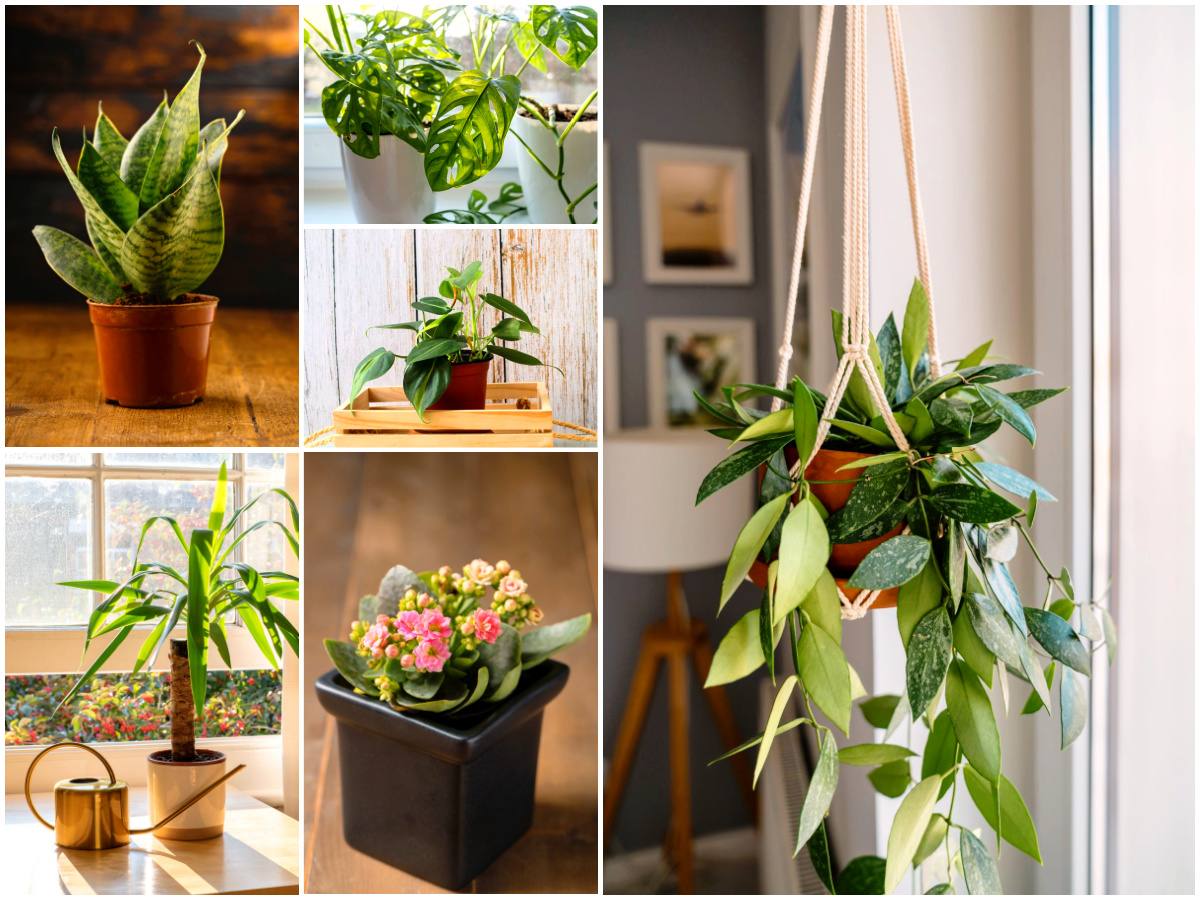As mentioned in the basil care guide, basil is not just a tasty herb that works great in all kinds of dishes, it’s also a decorative plant that can be maintained indoors and smells wonderful. You can buy basil plants in supermarkets or garden stores, but there is also another option: finding out how to plant basil from seed and growing your own.
Keep reading for everything you need to know about growing basil from seed indoors!
Choosing your basil seed
The first step to growing your own basil is choosing which type you want to go for. The ones mentioned below are just a few of the many cultivars and varieties available, so be sure to look around a bit more – or try them all.
- Classic sweet Genovese basil: the lush, green basil you use to make green pesto and add flavor to Italian dishes. You can buy Genovese basil seeds here!
- Thai sweet basil: pointy green leaves and purple stems and flowers. As the name suggests, this variety tastes wonderful in Thai dishes but be sure to experiment with it as it has many uses.
- Black basil: dark purple and almost black, the Dark Opal variety is a cultivar of sweet basil. It tastes similar (just a bit stronger) but looks just a little more spectacular.
- Lemon basil: basil flavor along with a burst of lemon. This variety is popular in dishes like stir-fries but also works well in salads.
Growing basil indoors
Now that you’ve gathered your seeds, let’s go into how to plant basil from seed. Luckily, turning those seeds into basil plants is not too challenging:
- You can sow basil in small starter pots with drainage holes.
- Because basil naturally occurs in warm climates it’s very sensitive to cold, so be sure to find a nice warm spot. I went for a seed incubator, which is definitely the easiest way to ensure things stay warm and moist (heat mat is a plus!). You can also cover the pot(s) with plastic wrap.
- You can use a rich normal potting soil with some perlite or a special seed starter mix. The soil should be moist but not overly wet.
- You can plant multiple seeds in each container; the amount depends on the size. It’s a good idea to plant a few extra because some seeds may not germinate, but try not to overcrowd things. Otherwise, the plants in the middle may not receive enough light once the surrounding ones get taller.
- After sowing, you can leave your basil alone to do its thing. The seeds will usually germinate quite quickly – it can take as little as 3 days in warm, moist environments like a seed incubator or a pot covered with plastic wrap. If yours take a little longer, no worries! Up to 7 days is not unusual either.
Did you know that if you already own a basil plant, there’s no need to learn how to plant basil from seed? Propagating basil is a much quicker way to grow new basil plants.

Basil plant care
Basil isn’t considered the easiest plant to care for indoors, but it can be done. The most important factors to keep in mind are light and water, both of which should be abundant.
- Once you see some little basil leaves sprouting, you can remove the pots from the propagator or remove the plastic wrap.
- A light location is very important to successfully grow basil indoors. As mentioned earlier, this plant naturally grows in very sunny areas, so providing as many hours of sun as possible will help prevent the seedlings from becoming too leggy. At least 6 hours is a good place to start, although more is appreciated.
- If you can’t provide a super sunny spot for your basil seedlings (like a South facing window) or the weather just isn’t cooperating, a grow light can really hep.
- Basil loves plenty of water, but like the adult plant, the seedlings don’t appreciate being watered from the top. This is where the drainage holes in your pots come in handy: just place the pots in a layer of water so the water can travel upwards through the soil. You can water once the top of the soil is dry.
- Once your basil plants have grown a few sets of leaves, you can transport them from your starter pots to (a) larger, normal container(s).
- As long as the plants grow well, you can fertilize them weekly or biweekly with a liquid fertilizer that helps stimulate leaf production.
Tip: You can grow basil outdoors, at least during the summer months. Being able to benefit from the direct sun will really help your basil plant(s) grow vigorously so you can make plenty of pesto! Just take the plant inside during fall if you live in a cooler climate.

Harvesting basil
- Once your basil seedlings start have grown multiple “real” leaves, you can start harvesting. Remove the top leaves and use them in any way you want!
- Even if you don’t need any basil yet, it’s a good idea to pinch off the top few leaves now and then, as this encourages bushy plant growth.
- Basil plants produce pretty little flowers, but if you’re growing this herb to eat it, it’s best to remove these as soon as you see them. Flowering decreases leaf growth and taste.
Basil isn’t the easiest plant to grow from seed, but its quick growth and wonderful taste definitely make it worth a try. Seeds aren’t expensive, so if your seedlings don’t make it, don’t get discouraged – just try again!





